1973 Indy 500 Winner Gordon Johncock 'Always Tried to Do the Right Thing'
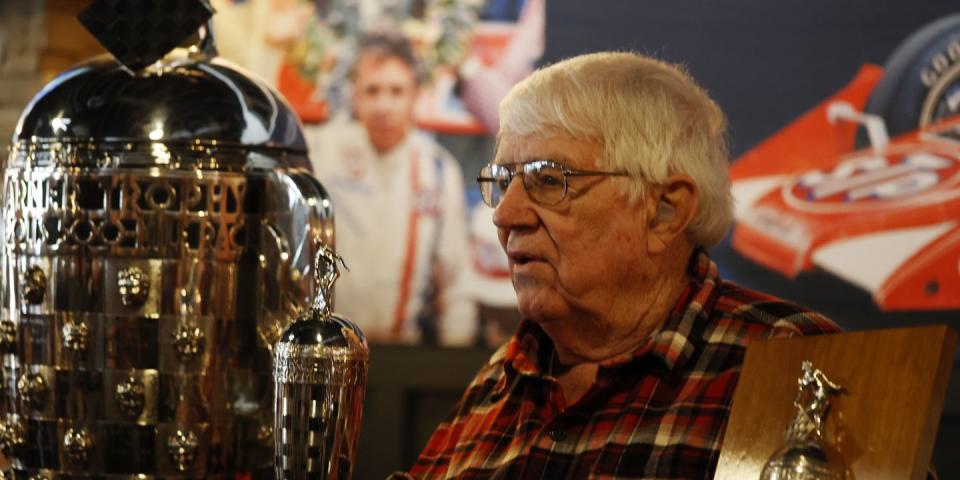
Come this Sunday morning, Gordon Johncock will celebrate the 50th anniversary of his first of what would eventually be two wins in the Indianapolis 500.
In an exclusive interview with Autoweek, Johncock still vividly remembers the day he catapulted into Indy 500 greatness. The race was postponed three days due to weather before it finally took the green flag on Wednesday, May 30, 1973.
Driving the Pat Patrick-owned No. 20 STP Eagle Offenhauser, Johncock dominated the race, leading just under half (64) of the rain-shortened event’s 133 laps, taking the lead on Lap 73 and held on the rest of the way until the event was red-flagged.

“I didn't feel that race was given to us,” Johncock said when asked about the race ending 67 laps short of its scheduled finish. “If we had only led one or two laps and happened to be settin’ there when they stopped it and won it that way, then I guess you wouldn't have earned it very well.
“But I think we earned the race, it wasn't given to us. We were one of the fastest cars that day and ended up winning the race. I don't know what it would have been if we held together. We probably would have won it at 200 laps, I suppose, because we were fast enough and led enough laps and would have been alright, but we will never know that.”
However, the win still wound up being somewhat bittersweet for Johncock, who turns 87 on August 5.
Because of the rain, a muted and shortened post-race celebration was held in the garage area. But Johncock and his team weren’t in a celebratory mode, as they were also thinking of their teammate, Swede Savage, who was severely injured in a crash in the race.
In addition, sadly, a crew member on the Patrick team, Armando Teran, was struck and killed by a fire truck driving north on pit road that was responding to the scene of Savage’s horrific crash.
As a result, immediately after the post-race awards celebration, Johncock and his team went directly to the hospital to check on their fallen teammate, the post-race celebratory banquet to honor Johncock was canceled, the team had dinner at a local hamburger joint, and sadly, Savage passed away from his injuries 33 days later on July 3, 1973.
When asked if it feels like it has been 50 years since he won for the first time at Indy, the Michigan native chuckled and said, “Time goes so fast. It surely doesn't when you look back at it, and 50 years ago, no, it sure don’t seem like it’s been that long ago.”
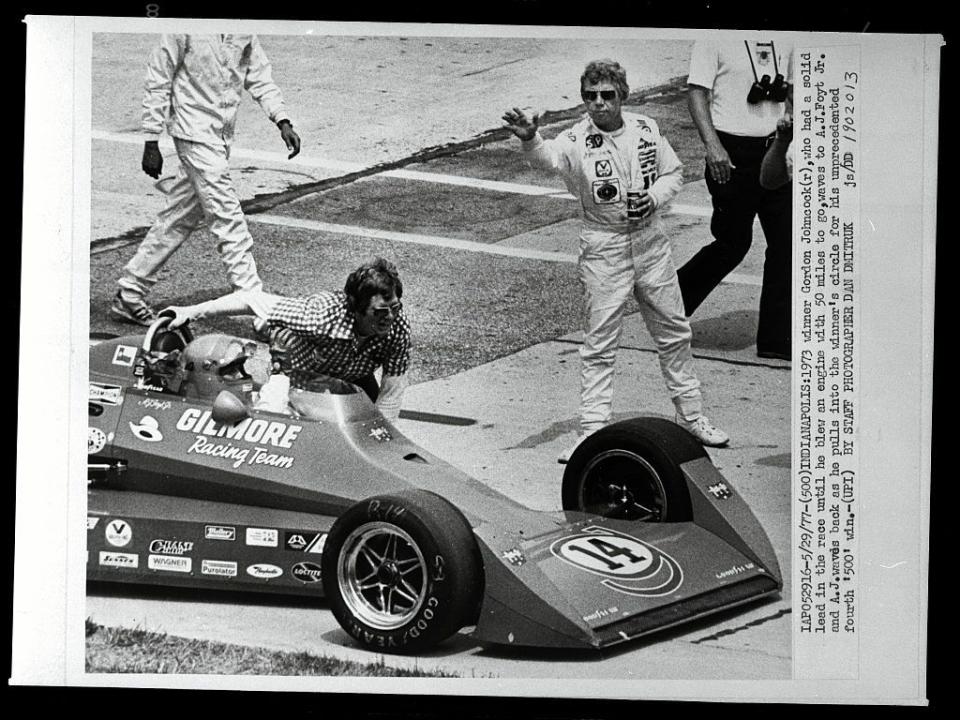
Johncock finished third in the 1976 and 1978 editions of the Indy 500, and had dominated the 1977 race, comfortably in the lead with 16 laps to go, when a crankshaft broke on his car, paving the way for A.J. Foyt to earn his record-breaking fourth 500 victory.
(And wait until you hear what Johncock had to say about that race here in a few minutes.)
But after coming so close those three other times, Johncock came back in 1982 to win the 500 for a second time, outdueling Rick Mears and winning by 0.16 seconds, roughly one car length, at the time the closest finish in 500 history (it remains the fourth-closest behind the 1992, 2014 and 2006 finishes).
“The more pressure that was put on me when I was racing, I think the better I did,” Johncock said.
Ironically, had Mears won that race, he would now likely be the only five-time Indy 500 winner, instead of being one of four drivers (Foyt, Al Unser, Helio Castroneves and Mears) who have turned the rare feat.
While Johncock and Mears never have looked back on what might have been if Mears would have won the ‘82 race instead, the man called “Gordy” got a bit fired up when it came to talk about Foyt.
They had a difficult relationship and even to this day, Johncock bristles and still alleges Foyt cheated during his career.
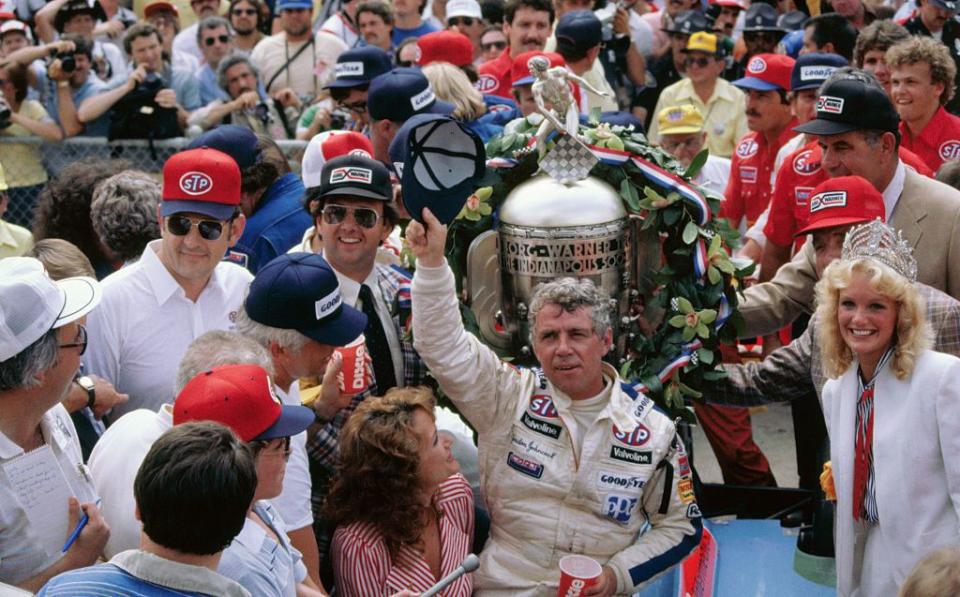
“Well, we had a pretty good relationship when I first started, but I got to where I realized how bad he was able to cheat at racing and it really kind of got to me,” Johncock said. “There’d be times he’d qualify and come back to the garage area, and USAC inspectors wanted to go in the garage and he wouldn’t let them in, so I guess that had to tell you something. Then guys would clock him on the backstretch and see how much faster he was going than other cars.”
As for who was the toughest competitor he ever faced in Indy car racing, “I’d have to say Bobby Unser was the toughest competitor, head-to-head, for me,” Johncock said. “He was always right there, never gave up, he’d get out of the car all he could get. Bobby was exceptionally good. It’s hard to believe Bobby and Al are both gone. It doesn’t seem right.”
But Foyt is still around at 88 years old. Johncock once again reached back into his sense of humor when asked if he and Mears had ever talked about his 1982 win deprived Mears of eventually winning a fifth Indy 500.
“No, we never really talked about that,” Johncock said, before setting up the punchline. “In some ways, I wish (Mears) would have won and it would have been five and I wouldn’t have had to hear about Foyt winning No. 4 (in 1977) all the time.
“I gave Foyt his No. 4 and he took my own No. 3 away. I had 16 laps to go and a 17-second lead on Foyt and blew an engine coming down the front straightaway.
“Yes, that one most definitely does still eat at me. I’d have to say my biggest disappointment in life was when that engine blew and gave (Foyt) his fourth win.”
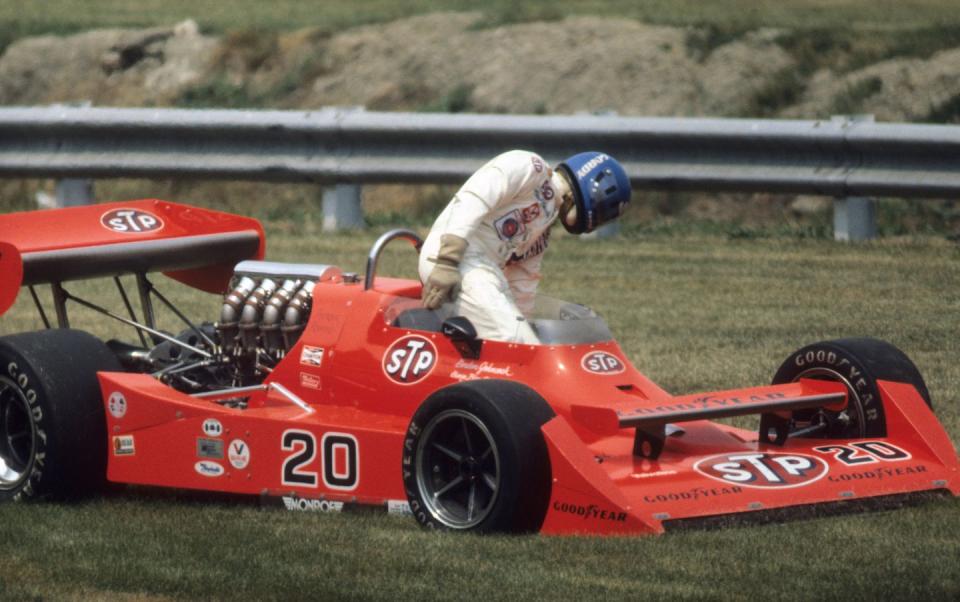
During the same time he was building his racing career, Johncock began building a lumber and sawmill business 200 miles north of Detroit. And even though he could have long retired from it, he’s still active daily in it, overseeing 17 employees while still being very hands-on himself, even at his age.
“You need to do something,” Johncock said. “If you don’t have something to do, you’re just gonna sit around and fade away. I am 86 now, I don't really feel like I'm 86 and the numbers don't seem to mean a lot. I like to have something to do.”
Will he EVER retire? Johncock answered the question much like the way he drove his race car back in the day: firm, matter of fact and to the point.
“Well, I have no plans,” he said with another chuckle.
As for racing, Johncock still follows IndyCar racing, mainly on TV. He hasn’t been back to Indianapolis Motor Speedway for several years, primarily due to health reasons and lingering effects of the Covid-19 pandemic, of which he is especially susceptible to.
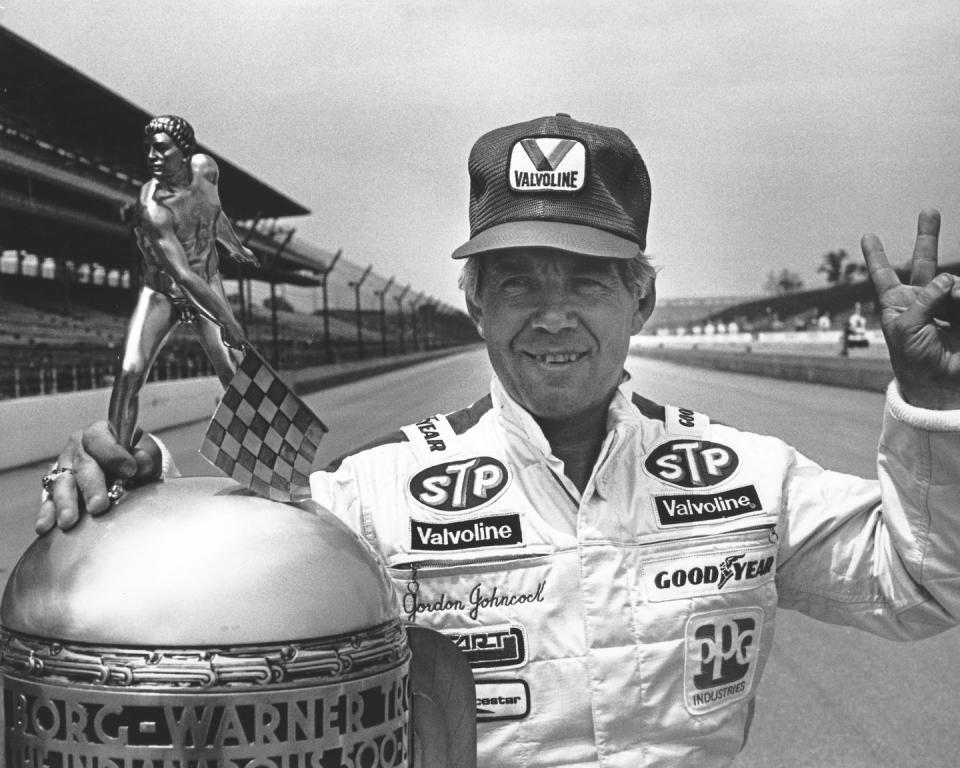
“I don't go to the races, well, I haven’t since the disease (COVID),” Johncock said. “I've only got one lung that functions right and I can't afford to get this disease. I do watch it some.”
He then adds with another chuckle about today’s IndyCar series, “There’s not that many guys I know anymore that run there. Most of them I don’t know that well, just the American guys like (Josef) Newgarden and (Colton) Herta and (Ed) Carpenter and Marco (Andretti).”
He’ll be watching this Sunday’s race, wondering who will be the next driver to, in effect, follow in his and the footsteps of so many others who have won the Greatest Spectacle of Racing.
But there’s a caveat: he’ll watch the start of Sunday’s race, head to the sawmill and then keep an eye on his watch so he can get back home just in time to see who crosses the same row of bricks he did when he won in 1973 and 1982.

“I’ll watch the start for a little bit and then try and get back home to watch the last 10 or 15 laps,” Johncock said. “I do also like watching them on some of the road courses, they get a little more exciting.”
Till this day, Johncock is still either recognized or reached out to by long-time Indy 500 fans. There are various videos online of his two biggest wins and his down-home, laidback demeanor makes him a fan favorite to talk with in-person or exchange letters with.
“Sure, it makes you feel good, there’s no question about that, that people remember you,” Johncock said. “I always tried to do the right thing, didn’t create a lot of controversy, be in trouble or things like that. I just done my own thing, went racing, and then when the race was over, I’d either get in an airplane or my motor home and drive home and went to work the next day (in his timber business).
“I always enjoyed what I was doing, racing, always done my best. I didn’t go out drinking. I’ve never had a beer in my life. I didn’t smoke. I always tried to stay in shape. I didn’t go out and work and exercise, I got enough of that when I’d go to work (in the timber business).”
As the conversation concluded, Johncock was asked whether he had any messages to impart to drivers of today. His response was totally spot-on.
“You know, the guys nowadays, what are they gonna do when they're done driving?” he asked. “Nobody’s gonna want them here pretty soon. There's too many 18-.19-year-old, 20-year-olds that are coming up, that are doing well.
“Some I’ve actually never heard of but they seem to do a good job. So, they're going to be taking the rides away from these old duffers and they ain't gonna have nothing to do.”
When that happens, they can forget about working for a sawmill in northern Michigan – they're not hiring.
Follow Autoweek contributor Jerry Bonkowski on Twitter @JerryBonkowski

 Yahoo Autos
Yahoo Autos 